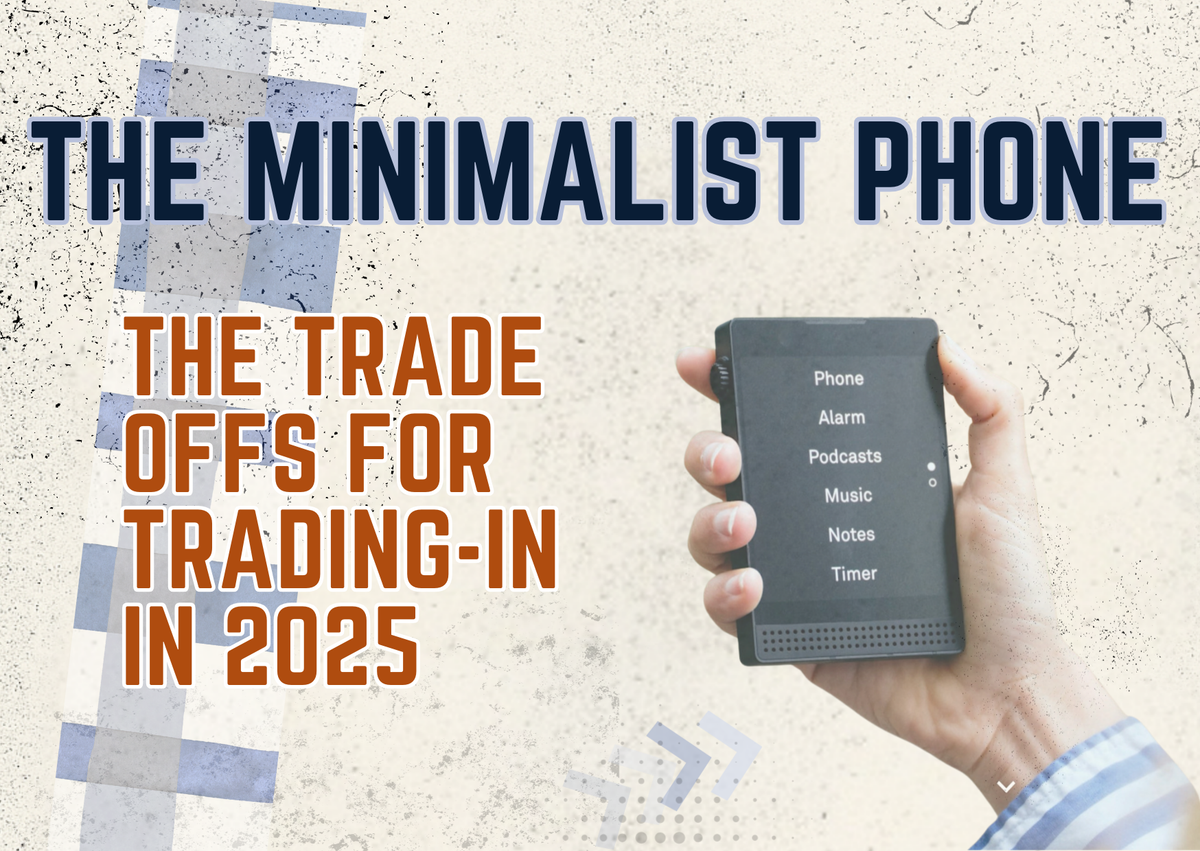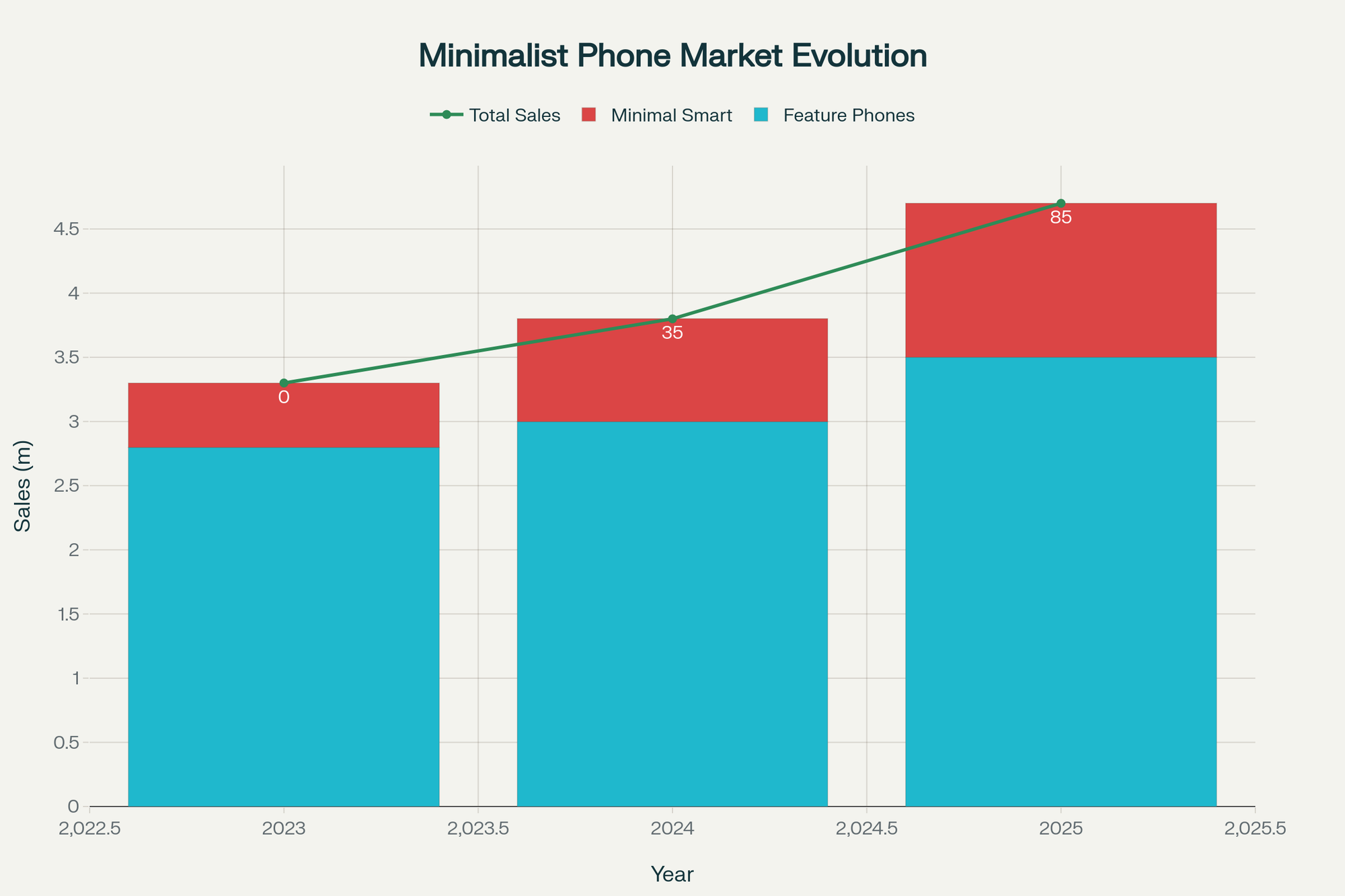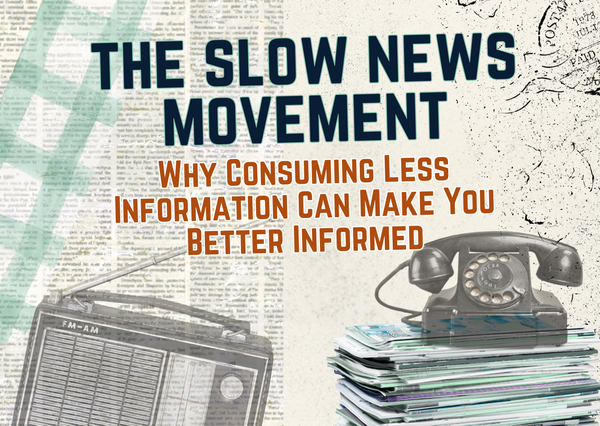The Minimalist Phone: The Trade offs for trading-in in 2025

Remember when phones were just... phones? When you could go hours without checking them, when they lasted days on a single charge, and when the most exciting thing they did was play Snake? Well, whisper it quietly but those days might be making a comeback.
In our hyperconnected world of 2025, something unexpected is happening. People are voluntarily downgrading their pocket supercomputers for what we lovingly call "dumbphones" - those beautifully simple devices that harken back to the early 2000s. And it's not as crazy as it sounds.
The Great Digital Burnout
The reality is we're all a little phone-obsessed. The numbers don't lie: an estimated 1.58 billion people worldwide show signs of smartphone dependency, and we're checking our phones hundreds, (yes hundreds!) of times daily. Seventy-one percent of teens feel anxious if they're separated from their phone for just half an hour. Half an hour!
The constant ping of notifications and the endless scroll of social feeds have created what can only be described as digital fatigue. We're exhausted by our own devices, and frankly, it's about time we admitted it.
As one tech researcher put it recently, "We're witnessing a cultural correction to the smartphone era" – people are finally realizing that being constantly connected comes with some serious mental health costs. Enter the minimalist phone movement: sometimes the smartest thing you can do is choose a less smart phone.
The Numbers Don't Lie (And They're Pretty Surprising)
What started as a quirky experiment among digital wellness enthusiasts has exploded into something much bigger. Feature phone sales – those basic devices that prioritize calls and texts over apps – have jumped 15% since 2023. - a solid 3.2 million units sold just in the first quarter of 2025.

Even more telling? Google searches for "minimalist smartphone" were practically nonexistent in mid-2024 but hit record highs by mid-2025. People aren't just curious – they're actively seeking alternatives.
And here's the kicker: it's Gen Z leading this charge. The very generation that grew up with smartphones is saying "enough already." When teenagers admit their pocket computers are stressing them out, you know something's up. Millennials and Gen X aren't far behind either – turns out nobody really enjoys living on the notification treadmill.
The Science of Stepping Back
This isn't just feel-good anecdotal stuff – there's real research backing up the benefits of digital detox. One fascinating study blocked internet access on participants' phones for two weeks (they could still call and text, but goodbye apps and social feeds). The results? About 70% reported better mental health, and 73% felt an overall boost in well-being after just 14 days.
But here's the really cool part: participants' attention spans improved so dramatically it was like they'd reversed 10 years of cognitive aging. Their brains literally got sharper just by cutting out the constant digital noise. And these benefits stuck around even after they went back online.
Users of minimalist phones report all sorts of life improvements that honestly sound pretty appealing:
- Battery life that actually lasts: We're talking 3-5 days on a single charge. Remember when phones could do that?
- Better sleep: No glowing screen pulling you into an Instagram rabbit hole at midnight
- Actual focus: Fewer pings means you can actually concentrate on conversations, work, or just... existing in the moment
- Privacy peace of mind: These phones collect way less data – no social media apps mining your every move
- Genuine presence: less worrying about the last or next ping, post or push. Just more present with ourselves and those around us; perfect.
One user described his basic phone as "a meditation retreat in my pocket." When he's using it, he's actually present instead of nervously checking Instagram every two minutes. And honestly, that sounds pretty nice.
Meet the New Generation of "Dumb" Phones
Don't worry – we're not talking about going back to those indestructible Nokia bricks (though those are available too). The minimalist phone scene in 2025 is surprisingly diverse and, dare I say, pretty cool.
The Premium Route: Light Phone III
At the high end, there's the Light Phone III – a sleek, credit-card-shaped device that costs about $599. Yes, that's smartphone money for a "dumb" phone, but it has its merits...
This thing is gorgeous: black and white AMOLED screen, 5G connectivity, even a decent camera. But here's what it doesn't have: no app store, no social media, no web browser, no email. You get calls, texts, music, basic maps, and that's your lot.
The company calls it "curation, not elimination" – you get the essentials without the endless rabbit holes. There's even a tactile wheel on the side (very iPod-esque) for adjusting brightness and toggling the flashlight. It's premium simplicity, though one reviewer noted the price was enough to make his dad "spit out his coffee."
The E-Ink Revolution
Here's where things get interesting: e-ink displays. Same technology that's in Kindle readers – grayscale, paper-like screens that sip battery power and are easy on the eyes. Perfect for a device you're supposed to use less.
The Mudita Kompakt from Poland rocks a 4.3-inch e-ink screen and can last up to six days on a charge. It even has an "Offline mode" slider that cuts all connections – cellular, Wi-Fi, Bluetooth – and disconnects the mics and camera for total digital silence. It's like a panic button for when you need to completely disappear from the digital world.
Then there's The Minimal Phone (yes, that's actually its name), which takes a hybrid approach. It's basically a full Android phone with an e-ink screen and a BlackBerry-style keyboard. You can install apps if you really need them, but good luck binge-watching Netflix in grayscale with a laggy refresh rate. It's like smartphone methadone – you can get your fix if absolutely necessary, but in a much more controlled way.
Finding the Sweet Spot
Look, nobody's saying we need to throw all our smartphones in a drawer and go completely analog. The minimalist phone movement is about finding balance in our relationship with technology. After 15 years of increasingly addictive devices, we've hit a point where millions of people are voluntarily downgrading. That should tell us something.
Every major communication breakthrough – radio, TV, internet, smartphones – eventually sparks pushback when people realize it's taking over their lives. This feels like one of those moments. The pendulum is swinging back toward something more sustainable.
Critics will say it's just clever marketing, repackaging old tech as wellness gadgets. And sure, there's probably some truth to that. But when users consistently report genuine improvements in their quality of life and stick with these devices long-term, it suggests there's something real here.
Consider this: at current screen time rates, the average person will spend about 21 years of their life staring at devices. A minimalist phone aims to give some of that back. That's not marketing fluff – that's mathematics.
The Bottom Line
The goal isn't to bash smartphones or pretend the old days were perfect. It's about making conscious choices about how technology fits into our lives. Minimalist phones offer a tangible way to draw boundaries and say: "I decide when and how my phone gets my attention."
Whether this becomes mainstream or remains a niche movement, who knows? But right now, it's a refreshing reminder that innovation doesn't always mean adding more features. Sometimes the most advanced thing you can do is simplify.
If you're feeling overwhelmed by your smartphone's constant demands for attention, know that you're not alone. There's a whole world of minimalist devices out there ready to help you unplug – from trusty flip phones to sleek e-ink gadgets that look like they time-traveled from a more thoughtful future.
After all, life is happening right in front of us. Your phone should serve you, not the other way around. And if reclaiming that relationship means reaching for a device that can't do 500 things at once? Well, that might just be the smartest choice you make for your decidedly less-smart phone.




